If you buy through links on our site, we may earn a small affiliate commission to help support the blog - at no extra cost to you. It never influences our product selection process. Thank you!
Wondering how often Invisalign trays are changed during your treatment? This common question affects both your treatment timeline and your daily routine as you work toward that perfect smile.
Most patients change their Invisalign trays every 1-2 weeks, depending on their exact treatment plan. Your orthodontist will create a customized schedule based on the complexity of your case, how your teeth respond to movement, and your overall treatment goals. Understanding this schedule is crucial for achieving optimal results and avoiding unnecessary delays in your teeth-straightening journey.
What Are Invisalign Trays and How Do They Work?
Invisalign trays are custom-made, clear plastic aligners designed to gradually move your teeth into their desired positions. These transparent orthodontic devices offer a discreet alternative to traditional metal braces, making them particularly popular among adults and teens seeking aesthetic treatment options. Each tray is precisely crafted using 3D computer imaging technology to fit your teeth at each stage of the treatment process.
The science behind Invisalign involves controlled force application to exact teeth. Your orthodontist maps out a precise treatment plan using specialized software that visualizes the entire correction process from start to finish. This digital planning allows you to see your projected results before even starting treatment.
Sarah, one of Dr. Todd B. Harris’s patients, initially worried about how Invisalign would impact her professional life. “I was hesitant about starting orthodontic treatment in my 30s,” she shares. “But the invisible nature of the trays meant most of my colleagues didn’t even notice I was wearing them during important presentations.”
Unlike traditional braces, Invisalign trays are removable, allowing you to eat, brush, and floss normally. The aligners work by applying consistent, gentle pressure to shift teeth approximately 0.25-0.3 millimeters per tray. Typical treatment requires 20-30 different aligners worn sequentially to achieve the final result.
Dr. Harris notes, “The removable nature of Invisalign is both its greatest advantage and potential pitfall. Patients who wear their aligners for the recommended 20-22 hours daily see the best results, while inconsistent wear often leads to treatment delays.”
The effectiveness of Invisalign depends on proper tray changes and consistent wear. Each new tray builds upon the progress made by the previous one, creating a systematic approach to teeth straightening that’s both comfortable and efficient for various orthodontic issues.
The Standard Timeline for Changing Invisalign Trays

Invisalign trays follow a predictable replacement schedule designed to optimize tooth movement while maintaining comfort. Most patients change their aligners every one to two weeks as part of their customized treatment plan, allowing for gradual and controlled shifting of teeth into their desired positions.
Weekly vs. Bi-Weekly Changes: What’s More Common?
Bi-weekly changes (every 14 days) represent the traditional approach for many Invisalign patients. This two-week interval gives teeth adequate time to adjust to the pressure and complete the prescribed movement before advancing to the next set. Patients with moderate alignment issues or those who occasionally struggle with consistent wear time often benefit from this more conservative schedule.
Weekly changes (every 7 days) have become increasingly common for certain cases. This accelerated timeline works particularly well for patients with simpler orthodontic issues or those whose teeth respond quickly to movement. Dr. Todd B. Harris notes, “I’ve seen remarkable progress in patients like Sarah, a college student with minor crowding who was able to follow a weekly change protocol and completed her treatment nearly 40% faster than initially projected.”
The optimal change frequency varies based on individual factors, with your orthodontist making adjustments throughout treatment to ensure efficient progress without compromising results.
How Your Dentist Determines Your Change Schedule
Your individualized treatment plan serves as the foundation for determining tray change frequency. The complexity of your orthodontic case directly impacts how quickly you’ll progress through aligners—straightforward alignment issues typically permit faster changes than complex rotations or important bite corrections.
Tooth movement complexity plays a crucial role in your change schedule. Simple movements respond more predictably to aligner pressure, often allowing weekly changes, while stubborn teeth may require extended time in each tray to achieve the desired movement.
Patient compliance remains perhaps the most important factor affecting your change timeline. Consistently wearing your aligners 20-22 hours daily ensures teeth move as planned, while removing them too frequently disrupts progress and potentially extends treatment time.
Regular orthodontic assessments provide opportunities to evaluate your progress and adjust your schedule accordingly. During these check-ups, your dentist examines how your teeth have responded to the current aligners before determining if you’re ready to advance to the next set. Some patients experience faster-than-expected tooth movement, allowing for accelerated changes, while others may need extended time with certain trays to achieve complete movement.
Factors That Affect Your Invisalign Tray Change Frequency
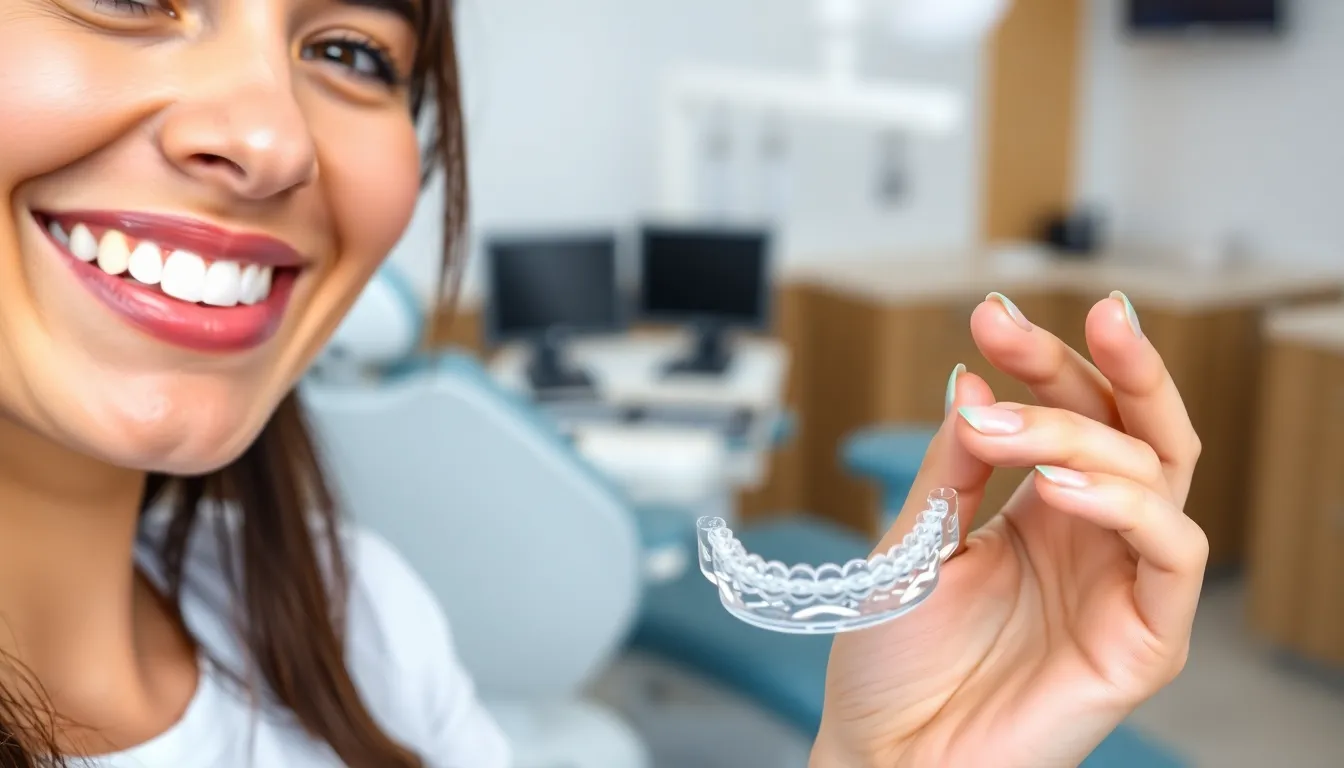
Several key factors determine how often you’ll need to change your Invisalign trays during treatment. Your orthodontist customizes your tray change schedule based on your exact needs rather than following a one-size-fits-all approach.
Complexity of Your Dental Issues
The severity of your orthodontic problems directly impacts your Invisalign change schedule. Mild misalignments typically allow for faster tray changes, often closer to the weekly end of the spectrum. Complex cases involving severe crowding, important bite problems, or extensive tooth rotation require more time with each tray, resulting in longer intervals between changes. Patients with straightforward alignment needs often progress more quickly through their treatment sequence than those requiring more elaborate tooth movements.
Patient Compliance and Wear Time
Your commitment to wearing the aligners consistently plays a crucial role in determining tray change frequency. Invisalign trays must be worn 20-22 hours daily to achieve the intended tooth movement. Removing trays for more than the recommended 2-4 hours daily slows progress and may require extending the time between tray changes. Patients who strictly adhere to the wear schedule often maintain their planned change frequency, while those with inconsistent wear patterns typically experience delays in their treatment timeline.
Individual Response to Treatment
Everyone’s teeth respond differently to orthodontic treatment based on biology and physiology. Some patients naturally experience faster tooth movement, allowing for more frequent tray changes. Bone density, age, and metabolism all influence how quickly your teeth shift position. Your orthodontist monitors your progress through regular check-ups, adjusting your tray change schedule based on how effectively your teeth are moving with each aligner. Dr. Todd B. Harris often notes that teenage patients typically see faster movement than adults due to their more active bone remodeling processes, though individual variations exist in every age group.
Signs It’s Time to Change Your Invisalign Trays

Recognizing when to switch to your next Invisalign tray ensures your treatment progresses efficiently and effectively. Following your orthodontist’s prescribed schedule is the primary guideline, with most patients changing trays every 7-14 days while wearing them for 20-22 hours daily.
Physical Indicators Your Current Tray Has Done Its Job
Your current Invisalign tray gives clear signals when it’s completed its tooth-moving mission. A properly fitting aligner feels snug but not loose against your teeth, indicating teeth have shifted to match the tray’s shape. The initial tightness you experienced when first inserting the tray should diminish significantly by the end of the wear period.
Premature tray changes can cause complications in your treatment plan. Switching too early places excessive pressure on teeth that haven’t fully moved, potentially causing unnecessary pain and disrupting the carefully calculated movement sequence. Many patients report that their trays feel most comfortable right before it’s time to change them—this comfort actually signals successful tooth movement to the desired position.
Dr. Todd B. Harris often tells patients, “Your trays should feel like they belong in your mouth by day 10-14, not like they’re fighting against your teeth. This sensation of ‘settling in’ is exactly what we want to see before moving to the next stage.”
When to Contact Your Orthodontist About Tray Issues
Unusual pain or discomfort beyond the normal adjustment soreness warrants contacting your orthodontist. Persistent pain that doesn’t subside within a few days of wearing a new tray might indicate a problem with fit or excessive pressure points.
Loose-fitting aligners before your scheduled change date suggest potential issues with tooth movement or aligner damage. Cracked, chipped, or damaged trays compromise their effectiveness and require immediate attention to avoid treatment delays.
Concerns about your progress or difficulties maintaining the recommended 20-22 hour daily wear time should prompt a conversation with your orthodontist. Your provider can adjust your treatment plan based on these factors, potentially extending wear time for certain trays or modifying your change schedule.
Technology and Tools That Monitor Invisalign Progress

Modern technology plays a crucial role in tracking and optimizing your Invisalign treatment journey. Digital tools help both orthodontists and patients monitor progress, ensure compliance, and achieve optimal results within the standard 1-2 week tray change schedule.
Apps and Tracking Systems for Your Treatment
Invisalign offers dedicated mobile applications that complement your treatment by helping you track your progress and maintain your schedule. The My Invisalign app enables you to set reminders for your aligner changes every 7-14 days based on your orthodontist’s instructions. Tracking features allow you to document your transformation with photos, record wear time (essential for maintaining the recommended 20-22 hours daily), and receive notifications for upcoming orthodontist appointments.
Dr. Todd B. Harris notes, “Patients who actively use the Invisalign tracking app typically show better compliance with their wear schedule and report feeling more engaged in their treatment process. One of my patients, Sarah, reduced her total treatment time by nearly two months by consistently using the app to maintain her weekly tray change schedule.”
Additional third-party apps like TrayMinder offer specialized features such as aligner wear timers, change date trackers, and progress photos organized chronologically. These technological tools make it easier to adhere to your personalized change schedule, whether that’s the standard bi-weekly changes or an accelerated weekly protocol for simpler cases.
Tips for a Smooth Transition Between Trays

Transitioning between Invisalign trays doesn’t have to be challenging if you follow these practical guidelines. Consistent wear time of 20-22 hours daily ensures your treatment stays on schedule and each transition goes smoothly. Many patients find that maintaining this discipline helps them avoid delays in their treatment timeline.
Stick to Your Prescribed Schedule
Following your orthodontist’s recommended tray change frequency is crucial for successful treatment. Set calendar reminders or use the My Invisalign app to track when it’s time for your next tray change. Dr. Todd B. Harris observes, “Patients who diligently follow their prescribed schedule typically experience more predictable tooth movement and fewer complications during transitions.”
Maintain Proper Hygiene
Clean trays prevent bacterial buildup and unpleasant odors that can make transitions uncomfortable. Rinse your aligners every time you remove them, and clean them thoroughly with the recommended cleaning crystals or a gentle, clear soap. Avoid using colored soaps or toothpaste as they can discolor your clear aligners.
Manage Discomfort Effectively
Slight pressure or soreness when switching to a new tray indicates the aligners are working to move your teeth. Apply cold compresses to your cheeks for 15-20 minutes if you experience discomfort. Over-the-counter pain relievers like acetaminophen or ibuprofen can also help manage temporary soreness during the first few days with a new tray.
Change Trays Before Bedtime
Switching to a new tray before sleeping allows your teeth to adjust during the night when you’re less likely to notice discomfort. Sarah, one of Dr. Harris’s patients, shares, “Changing my trays before bed was a game-changer. I’d sleep through the initial adjustment period and wake up with much less soreness than when I switched trays in the morning.”
Communicate With Your Provider
Reaching out to your orthodontist promptly if you experience important pain or fit issues prevents treatment delays. Don’t hesitate to contact your provider if your aligners feel extremely tight, cause persistent pain, or if you notice gaps between the aligners and your teeth after several days of wear.
Conclusion
Your Invisalign journey requires changing trays every 1-2 weeks based on your unique treatment plan. Staying committed to your wear schedule of 20-22 hours daily and following your orthodontist’s guidance are key to achieving optimal results.
Modern technology like the My Invisalign app helps track your progress while simple habits like changing trays before bedtime and maintaining proper hygiene make transitions smoother. Remember that your treatment frequency is customized specifically for your dental needs.
Regular check-ups with your orthodontist ensure you’re progressing as planned. With proper compliance and consistent wear you’ll be enjoying your new smile before you know it.
Frequently Asked Questions
How often should I change my Invisalign trays?
Most patients change their Invisalign trays every 1-2 weeks, depending on their treatment plan. The standard schedule is typically every 14 days, though weekly changes are becoming more common for simpler cases. Your orthodontist will determine the optimal frequency based on your specific dental needs, treatment complexity, and how your teeth respond to movement.
Can I change my Invisalign trays earlier than scheduled?
No, you should not change your Invisalign trays earlier than prescribed. Changing trays too soon can disrupt the carefully planned tooth movement process, potentially leading to ineffective treatment or complications. Always follow your orthodontist’s recommended schedule, even if your current tray begins to feel comfortable before the change date.
How do I know if my Invisalign tray is working properly?
A properly working Invisalign tray will feel tight and somewhat uncomfortable when first inserted, then gradually become more comfortable as your teeth shift. You should notice your teeth aligning with the tray over time. If your tray feels consistently loose, doesn’t seem to be creating pressure, or causes severe pain, contact your orthodontist as these may indicate issues with your treatment.
What happens if I forget to change my Invisalign tray on time?
If you forget to change your tray on schedule, put in the next aligner as soon as you remember. Minor delays of 1-2 days typically won’t significantly impact treatment. However, consistently missing change dates can extend your overall treatment timeline. If you’ve delayed for several days or more, consult your orthodontist for guidance on how to proceed.
Should I clean my new Invisalign tray before wearing it?
Yes, you should clean your new Invisalign tray before wearing it. Rinse the new aligner with lukewarm water (not hot, as it can warp the plastic). You can also gently brush it with a soft toothbrush and mild, clear soap. Avoid colored or scented soaps, toothpaste, and mouthwash, which can damage or discolor the aligner.
Why am I experiencing pain when changing to a new Invisalign tray?
Discomfort when changing to a new Invisalign tray is normal and indicates the aligners are working to move your teeth. This typically subsides within a few days as your teeth adjust. To manage discomfort, try changing trays before bedtime so you sleep through initial soreness, take over-the-counter pain relievers if needed, use cold compresses, or temporarily switch to softer foods.
Can my Invisalign tray change schedule be adjusted during treatment?
Yes, your Invisalign tray change schedule can be adjusted during treatment. Your orthodontist may modify how frequently you change trays based on your progress, treatment response, and compliance. During regular check-ups, they’ll evaluate whether your teeth are moving as planned and may accelerate or slow down your schedule accordingly.
How important is wearing my Invisalign trays for the recommended 20-22 hours daily?
Wearing your Invisalign trays for 20-22 hours daily is crucial for successful treatment. Insufficient wear time can prevent teeth from moving as planned, potentially extending treatment duration or compromising results. Removable aligners offer convenience for eating and oral hygiene, but consistent wear ensures the continuous gentle pressure needed for effective tooth movement.

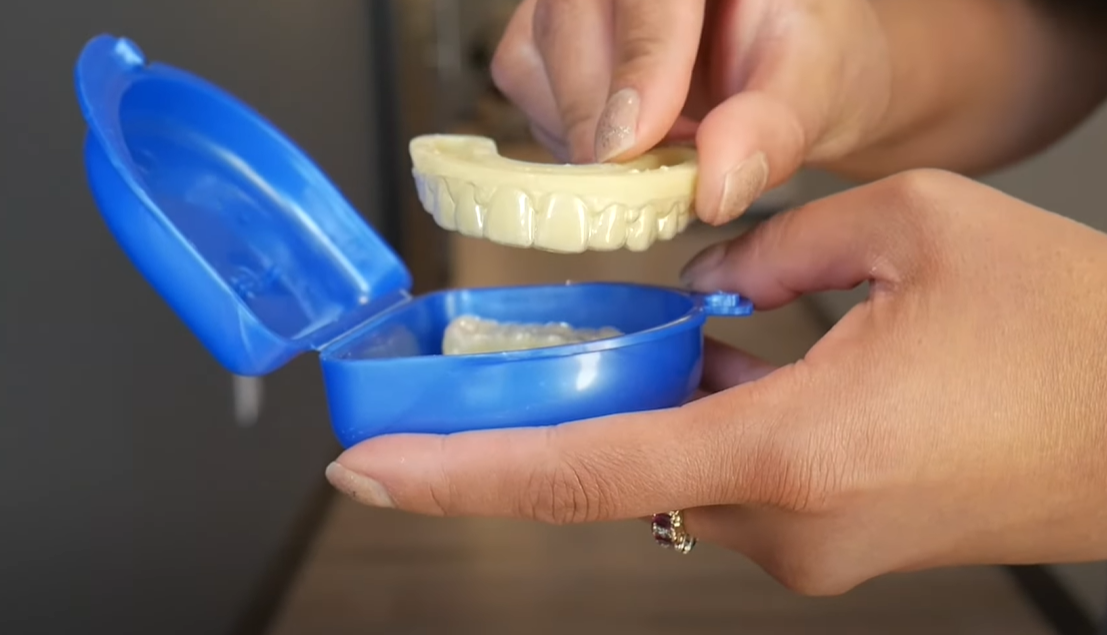
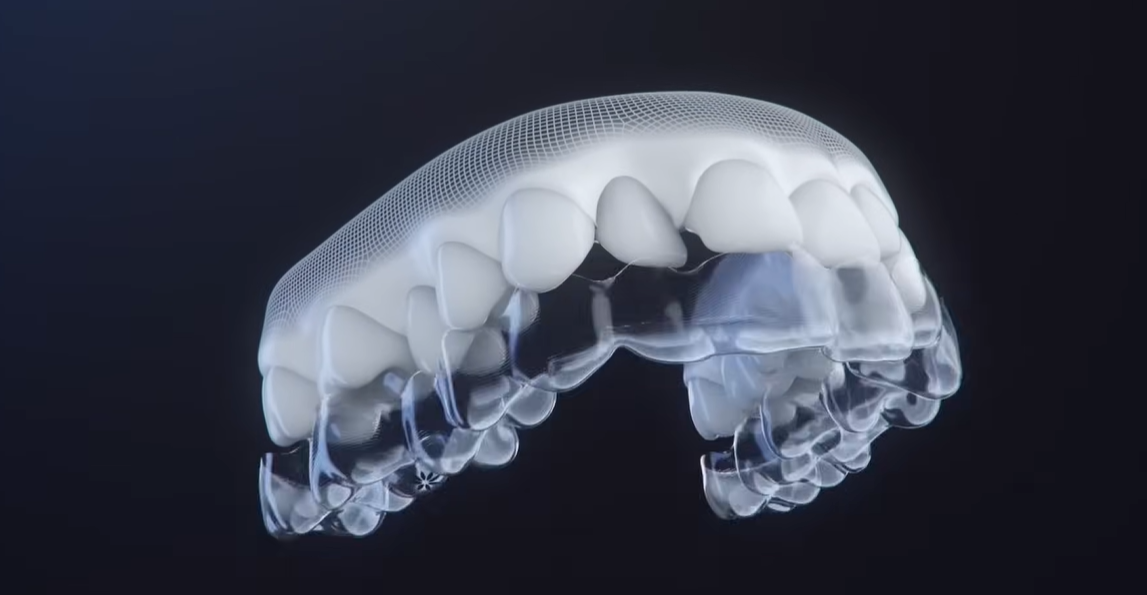

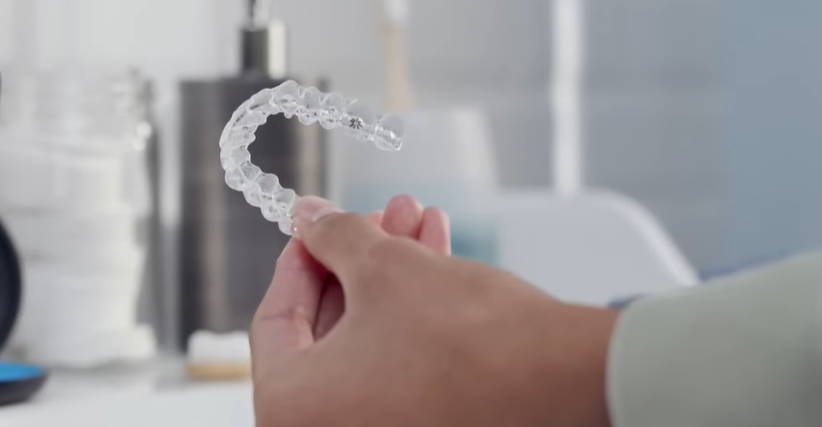
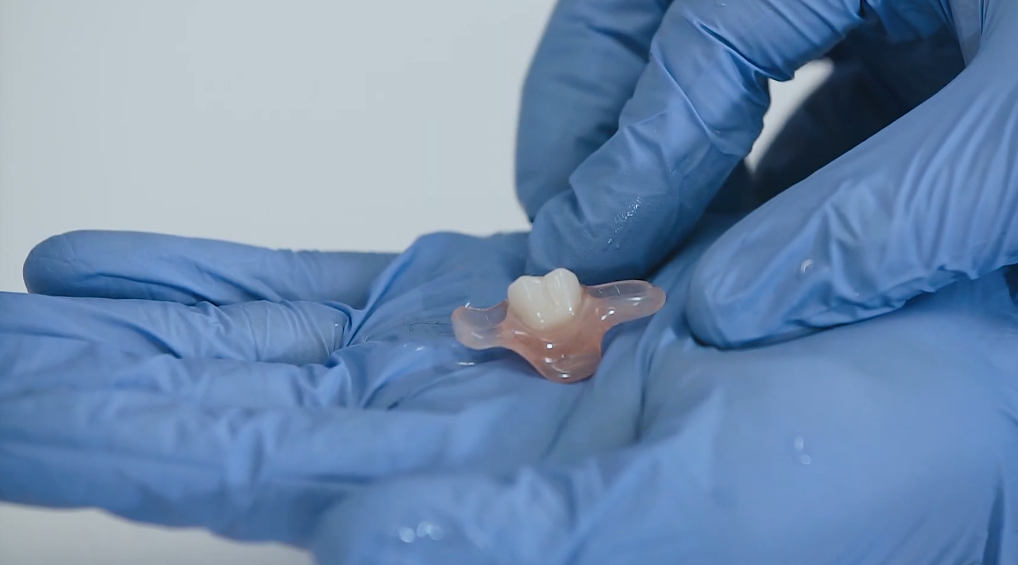
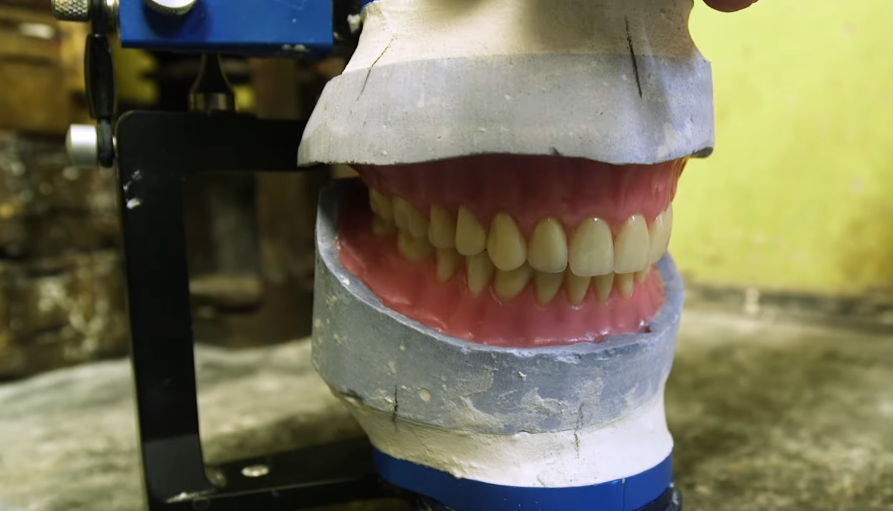
Pingback: Does Invisalign Dry Mouth Go Away? Your Complete Relief Guide - Harris Dental Associates